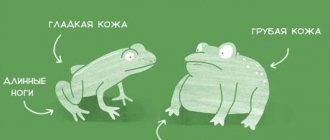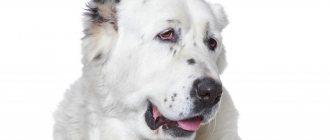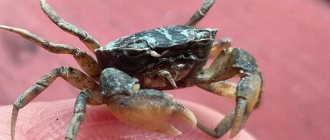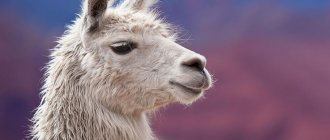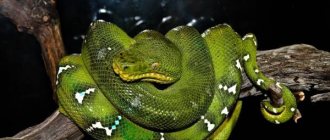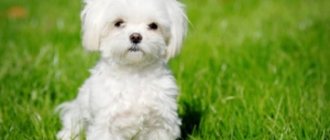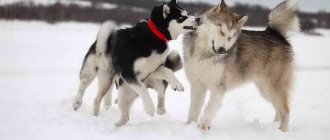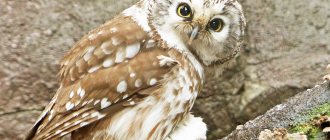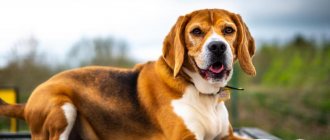Who is this donkey?
The domestic donkey (or as it is also called “donkey”) was important for humanity in the development of economic activity and even culture.
This animal is still an indispensable household assistant in many developing countries today. The donkey was not only one of the first animals domesticated by humans, but also the very first animal that humans began to use for transporting goods.
The first domesticated donkeys appeared in the Nile Delta region. Nubian donkeys were used for farming there already 4,000 BC. Later, animals were domesticated in Mesopotamia. Donkeys appeared in Europe in antiquity.
Man managed to domesticate only donkeys of the African breed. But kulans or Asian donkeys were never domesticated.
Donkeys originally served as draft animals. But they were also used for riding. True, when stronger and faster animals were domesticated - horses - they stopped riding donkeys and began to use them only as pack animals.
Donkey depicted in Ancient Egypt
The reasons for this use are clear - the donkey is a very hardy animal. He is able to survive without water and food for a large amount of time. In this property, the donkey is much superior to the horse.
If you turn to the Bible, it says that Jesus Christ rode into Jerusalem on Palm Sunday on whom? That's right, on a donkey. The donkey is also mentioned in the Koran. The Sunnah also prohibits the consumption of domestic donkey meat, but allows horse meat.
In addition to external features that are distinctive from horses, donkeys also have differences from horses that are not noticeable at first glance:
- donkeys and horses differ in the total number of vertebrae;
- the normal temperature of donkeys is 1 degree lower than that of horses (37 instead of 38);
- Donkey DNA has only 31 pairs of chromosomes, while horse DNA has 32;
- Donkeys have a longer pregnancy.
In addition, the donkey is capable of carrying loads weighing up to 2/3 of its own weight. There are cases when donkeys transported loads that exceeded the weight of the animal itself.
Today, donkey meat and milk are practically not used. But in ancient times they not only consumed the milk and meat of these animals, but the latter was even used for cosmetic purposes. Donkey skin was also used - high-quality parchment was made from it and drums were covered with it.
The donkey's performance is also amazing - it is able to work for 8-10 hours with only one break for lunch.
Reproduction and lifespan
The mating season for donkeys is associated with the onset of spring. Females carry their cubs for 12-14 months. A donkey usually gives birth to one donkey, feeding it with her own milk for about six months. Literally immediately after birth, the cub is already on its feet and is able to follow its mother. Usually, it takes him less than a year to become completely independent.
Little donkey
Crossbreeding of domestic donkeys by their owners contributes to the emergence of new species. Males often produce animal mules - donkeys crossed with mares. However, since hybrids are born incapable of procreation, their reproduction requires selection using a large number of purebred donkeys.
If well cared for, domestic donkeys have a lifespan of approximately 25 to 35 years. Cases of longevity up to 45–47 years have also been recorded. In nature, donkeys live much shorter lives, about 10 – 25 years.
Unfortunately, the wild ass as a species is currently in critical condition. Scientists know that it is hardly possible to count more than two hundred individuals in the wild. This species of animal is protected and listed in the Red Book. Great efforts are being made to breed wild donkeys in nurseries and zoos.
Description of the donkey
The donkey is an animal from the equine family, order odd-toed ungulates. The animal has the following coat colors:
- brown,
- gray,
- black,
- white (rare).
A distinctive feature of the donkey is the light color of the belly, the front of the muzzle and the ovals around the eyes. A dark narrow stripe stands out along the back. The tail is crowned with a tassel. Coarse mane. The pride of a donkey is its long ears (much higher than those of horses).
The donkey, unlike its horse relatives, has hooves well adapted to uneven and rocky surfaces. This allows him to move through the most difficult areas and surfaces, but does not give him the ability to jump at speed.
Despite this feature of the hooves, some donkeys are capable of accelerating to speeds of 70 km/h. Since donkeys are native to countries with dry climates, the humid climate of Europe has a negative impact on their hooves. Often deep cracks and holes form on the hooves, which become areas of rot. Therefore, caring for donkey hooves is very important.
As for the size of a donkey, it is, of course, smaller than a horse. Representatives of various breeds can reach a height of 90 - 160 cm.
Origin of animal names
In a biological sense, the animals in question are no different. They belong to the species Equus asinus and are distinguished by a number of features. The main advantages of such individuals include low maintenance, high endurance, high load capacity, and unpretentious diet. The key characteristics and differences relate to the origins of the words.
Who is this donkey
In Russian, this concept is considered a variation of the ancient common Slavic one. It comes from the Gothic word "asilus", which in turn is related to the Latin concept "asinus". There is no exact translation from Latin. However, the meaning of the term is interpreted as “an animal that resembles a horse, stands firmly on its hooves and roars.”
The donkey is considered the closest relative of the horse. It belongs to the class of mammals. The following varieties exist:
- wild;
- homemade.
All representatives of this category are characterized by the following features:
- lifespan – 25-35 years;
- Dimensions vary depending on the breed - on average, growth parameters are 90-160 centimeters;
- It is allowed to use animals for economic purposes no earlier than 3 years;
- It is permissible to teach people to work from the age of two;
- It is recommended to be very careful when breeding animals, as they cannot withstand dampness and cold;
- food can only be shrubs and grass;
- the shade of the coat varies and is determined by the breed;
- males are able to bear offspring.
To this day, many peoples breed these animals. In the mountains they are used as a means of transport. Donkeys can easily pass in places where a car or horse cannot pass. They are valued for their meat, wool, and milk.
Description of donkey
The word “donkey” entered the Russian language much later. This happened around the sixteenth century. The roots of the word go back to the Turkic language. Donkeys are most often called domestic animals. At the same time, wild individuals are often called donkeys.
What kind of animal is a mule
This word refers to a representative of a family of mammals that appeared by crossing a mare and a donkey. Typical features of mules include:
- the same size as horses;
- characterized by endurance and strength;
- the head is similar in appearance to that of a donkey;
- males do not bear offspring;
- can participate in races;
- life expectancy is a maximum of 40 years;
- are easily grown in farm conditions, since the animals eat different foods and are characterized by strong immunity.
Mules are divided into 2 main varieties:
- pack;
- harness
Breeding donkeys
The homeland of the wild donkey is Africa, and thanks to this, donkeys, unlike horses, tolerate the hot, arid climate much better. This is the main reason for the wide distribution of domestic donkeys in the hot countries of Africa and Asia. Later, donkeys were brought to other regions, even to Australia - they were popular everywhere.
In the first half of the 20th century, technological progress led to the appearance of cars and tractors. And this, in turn, led to the fact that the role of horses in the national economy lost its primary importance.
It would seem that the same thing should happen to donkeys. But no. The donkeys were saved, again, by the geographic location of their breeding regions. In simple words, donkeys were most popular in hot countries with mountainous terrain and poor economies. Progress certainly came there, but the money did not come. Residents of these countries simply cannot afford to buy expensive equipment, and not all equipment is capable of performing work in such conditions.
Therefore, in countries of a number of regions, such as Central and Central Asia, Africa and the Middle East, donkeys remain the most important draft force of the national economy today.
As for the developed countries of Europe and the USA, donkey breeding is carried out at the hobby level. True, there is also breeding of purebred donkeys for sale.
Keeping and breeding donkeys was considered a very profitable business. Cleopatra's cortege consisted of hundreds of donkeys, and she herself, according to legend, was not averse to bathing in pine milk to preserve her youth.
In Russia, the center of donkey breeding is Dagestan. The number of donkeys there is about 10 thousand heads.
The world population of domestic donkeys exceeds 40-50 million heads. Although, of course, no one has ever done an exact count.
Nutrition
There is an opinion that keeping a donkey is comparable to caring for a horse. But there are also significant differences. The donkey is more unpretentious to cleanliness, and does not require any special and special food, eating very little.
Donkeys can eat hay and straw, and their stomach can even digest thorns. They can be fed grain: barley, oats and other grains. Their maintenance is not too expensive for the owners.
Donkeys in the wild eat plant foods. They eat grass, various plants and leaves of bushes. Because they live in areas with arid climates and sparse vegetation, they often have to wander for a long time through sandy and rocky terrain in search of anything edible. Donkeys can go without water for a long time.
Characteristics of a donkey as a pet
So, as we have already noted, the main advantages of a donkey are endurance and unpretentiousness. The ability to carry enormous weights, amazing ability to work - all these are the advantages of donkeys. Load a donkey with half or more of its weight, and it will carry it almost all day. A horse is incapable of this.
The requirements for keeping donkeys are also minimal. They are not so demanding in terms of cleanliness of the room and its area, they are able to live even in cramped conditions with minimal lighting and ventilation. Therefore, they are more suitable than anyone else for keeping in hot regions with a low standard of living.
As for the donkeys’ diet, the requirements here are minimal. These animals are able to subsist practically on pasture, feeding on grass, shrubs, and even thorns that would seem unsuitable for food. It is enough to take the donkey out to even the most meager pasture in the form of a wasteland, and there he will find everything he needs. Moreover, it is better not to allow donkeys onto grass-rich pastures at all to avoid animal obesity.
Donkeys eat grains well: oats, barley and other cereals; they can eat straw, hay and even paper, fabric or twine without a threat to health.
The main disadvantage of a donkey can be called its character. The stubbornness of donkeys is described in many fairy tales and works. However, this is not stubbornness as such, but rather a sense of self-preservation. It is this instinct for self-preservation that other animals, in particular horses, lost during domestication, that donkeys retained. What does this mean?
A dog by nature is a predatory pack animal. But a domestic dog does not attack people. A cow, like a sheep, goes to the slaughter without complaint. Horses were often driven to death by people in war or other situations.
Donkey is not like that. He knows his capabilities and will not work as hard as he can. If the donkey is tired, he will stand up and not take a single step either under the whip or under the bait. Hence the false opinion about the stubbornness of a donkey.
Although we are accustomed to considering the donkey a stupid and stubborn animal, our ancestors had great respect for these robots. The owners of donkeys generally had a special status, because they had noticeable privileges compared to everyone else - the ability to move and easily transport goods.
The second consequence of the developed instinct of self-preservation in a donkey is its aggressiveness towards an animal that threatens its life. It doesn’t matter whether it’s a fox, a coyote or a dog - a donkey is ready to fight with all of them, protecting its offspring or territory.
Donkey and donkey: what kind of animals are they?
To answer the question, we can consider the origin of the names. It is not known exactly where the word “donkey” came from. Presumably it is derived from the Latin asinus, which has no direct translation into our language, but means a mammal similar in appearance to a horse, but distinguished by its smaller size.
You may be interested in: “Invulnerable” is a model that the pursuit of will make you better
The history of the origin of the word “donkey” has Turkic roots and it was used precisely to designate the familiar donkey. According to biologists, these animals originated from Somali ancestors and already in those ancient times they found economic use. It is believed that the first descendants of donkeys appeared in the northern part of Africa, from where they eventually settled throughout Asia and the Middle East.
Interesting Facts
Despite their unprepossessing appearance, donkeys are amazing mammals that provide great benefits to people. There are several interesting facts about these beautiful creatures:
- The domestication of the donkey occurred about 5 thousand years ago by the Egyptians. It is believed that this is the first animal that people began to keep at home.
- Breeding donkeys has become extremely popular, and they have spread throughout almost the entire globe.
- There are two types of donkeys and donkeys. What is the difference between them? One species is domesticated, and the other is represented by wild individuals. The latter prefer to live in fairly large groups, sometimes numbering up to one thousand individuals.
- Donkeys are good at adapting to completely different living conditions. They even manage to live for long periods in desert areas.
- It is believed that donkeys are prone to monogamy. Because of this, problems with the reproduction of individuals may arise.
- Almost immediately after birth, the little foal is ready to stand on its feet. It weighs about 30 kg.
Having become familiar with each of these animals, it becomes clear what the difference is between a donkey, a donkey and a mule. What unites them is the strongest instinct of self-preservation, which many people perceive as stubbornness. If their closest relative, which is a horse, can be driven to death, then this is not possible with a donkey, since it will not move until it has rested.
Source
Description and appearance of the kulan
The wild ass kulan looks extremely unusual - outwardly it looks like the body of a foal with the head of an adult donkey. This is because the kulan is significantly lower at the withers than almost any horse. Moreover, the kulan is even lower than the pony (in the USA, the standard for a pony starts from the top bar - one hundred and forty-two centimeters). Being true children of the wild, Kulan donkeys are very distantly similar to their domestic relatives - they are much heavier than domestic donkeys and are distinguished by a large head, elongated hooves and the absence of the characteristic and familiar horse “bang”.
Pictures of kulans, horses and donkeys placed side by side will make it easy to identify the differences.
Is there a difference between a donkey and a donkey?
So how is a donkey different from a donkey? In fact, there are no differences between these mammals. These are two designations for the same animal. It’s just that the word “donkey” appeared earlier and gained popularity faster than “donkey.”
But at the moment, in some areas, they are accustomed to calling males a donkey, and female representatives of the same species, a donkey. This is the only difference between a donkey and a donkey.
The animal itself is small in stature, nondescript in color, and its behavior is characterized by excessive stubbornness. However, regarding the character of this mammal, the prevailing opinion of people is somewhat stereotypical. Donkeys have many advantages that make them very useful allies in farming. These creatures are practically omnivorous, absolutely unpretentious and surprisingly hardy. They have a high load-carrying capacity and do not require forging, which is how donkeys and donkeys differ from horses. And although these mammals are not as popular as horses, they have many advantages.
Types and subspecies of kulans
Subspecies of kulan differ greatly depending on their habitat: mountain kulans are more like donkeys - with a powerful croup, low and broad-boned, large-headed, brightly colored, and lowland kulans are taller, thin-legged, very similar to small horses. Actually, there is practically no more differentiation - nature turned out to be a more successful breeder than people. Differences in shape and size by gender in kulan animals are very weakly expressed; the only difference can be seen between the winter and summer cover of the kulan - the hair is short in summer, long and wavy in winter.
Starting between the long ears, a short protruding mane runs along the neck, the tail is more like a donkey's, although with a rather fluffy tassel, but the color does not resemble either a horse or a donkey - it can be any shade of sandy color, reddish or reddish. brown. Photos of kulans, especially reddish ones, against a light or gray background look very beautiful - the shiny hair contrasts strongly with the background and is softer - with the delicate, almost white, covering of the belly, lower part of the neck and legs.
Kulans photo
Wild ass: name, description, habitat
The wild ass (Equus asinus) was most likely widespread in the North African deserts in the ancient past. As a species, unfortunately, it is practically not studied.
The ancestor of the domestic donkey (North Africa) has the appearance of a typical long-eared animal, much smaller in height than a horse (height up to 1.4 m), thin-legged, with a massive head and short mane.
A long time ago, various subspecies of this ungulate lived in North Africa and parts of Asia. As a result of domestication, they almost all disappeared in the ancient Roman era.
Today they are preserved only in the hills off the Egyptian Red Sea coast, in Ethiopia, Somalia, Sudan and Eritrea. A small population was able to take root in the Israeli reserve.
In Somalia, the wild ass may have disappeared completely as a result of the civil war. In Ethiopia and Sudan, the same fate probably awaits him too. Only Eritrea has a good population of these animals - about 400 individuals.


